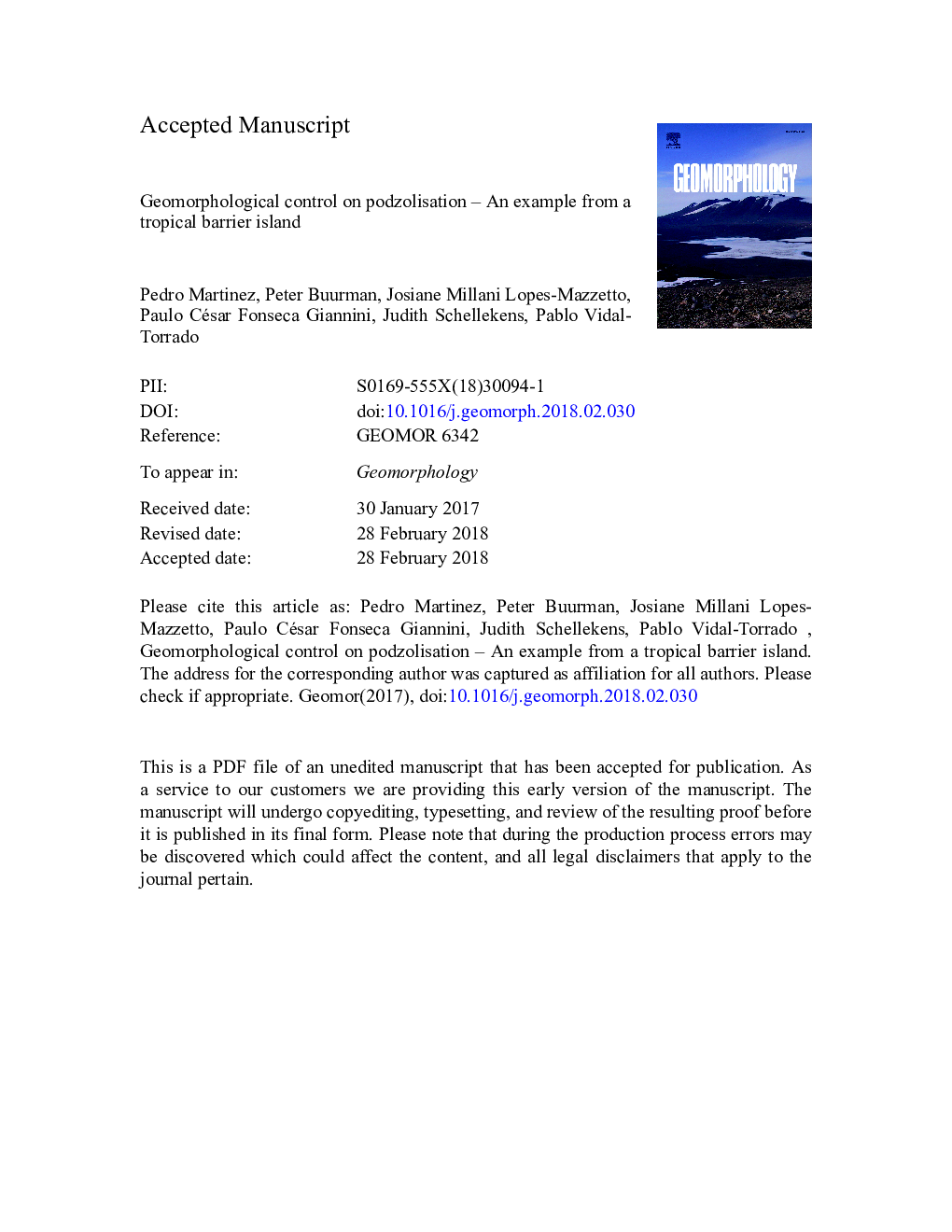| کد مقاله | کد نشریه | سال انتشار | مقاله انگلیسی | نسخه تمام متن |
|---|---|---|---|---|
| 8908059 | 1635341 | 2018 | 38 صفحه PDF | دانلود رایگان |
عنوان انگلیسی مقاله ISI
Geomorphological control on podzolisation - An example from a tropical barrier island
ترجمه فارسی عنوان
کنترل ژئومورفولوژیکی بر روی پوسته پوسته شدن - نمونه ای از یک جزیره مانع گرمسیری
دانلود مقاله + سفارش ترجمه
دانلود مقاله ISI انگلیسی
رایگان برای ایرانیان
موضوعات مرتبط
مهندسی و علوم پایه
علوم زمین و سیارات
فرآیندهای سطح زمین
چکیده انگلیسی
We investigated how the geomorphology of coastal barrier islands impacts soil hydrology and drainage at the landscape scale. Ilha Comprida is a Holocene barrier island with a 2.5â¯km-long cliff that is perpendicular to the coastal shore which provides an ideal condition to study the relation between age, relief, hydrology, and podzol morphology. Five geomorphic units were identified that differed in surface morphology and alignment of ridges and swales. Optical stimulated luminescence (OSL) dating showed that these geomorphic units had growth phases that decreased in age from west to east (Units I-V, from 5250â¯Â±â¯820 to 325â¯Â±â¯31â¯years ago, respectively). The geomorphic units were studied in two parallel 3â¯km transects on the southern part of the island. Along transect A-B, about 1â¯km from the southern shore, deep augerings were used to study sedimentary sequence and soil development, while on transect C-D on the southern shore, the continuous cliff exposure allowed more detailed morphological investigation. On all geomorphic units excluding the youngest, podzolisation has been the main soil-forming process. Groundwater level was monitored monthly for two years in 14 deep wells along transect A-B. Groundwater level during the formation of the B horizon was ascertained by determination of Fe. Podzol morphology (color of B horizon and its boundary with the E horizon) generally showed correlation to groundwater levels for both transects, except for the podzols in southwestern part of the island (Unit II). The podzols of Unit II showed an extremely thick (3â¯m) Bhm horizon devoid of Fe, indicating that they were formed under poor drainage conditions. However, soil morphology (undulating EB horizon boundary) and measured groundwater levels (below the B horizons) demonstrated that drainage has been improved. The extremely thick B horizon (3â¯m) in those podzols, which was formed in approximately 3000â¯years, and its genesis is explained by concentrated lateral flow of DOM-loaded groundwater due to the converging ridge alignments found in these units, in combination with a gradual uplift of the southwestern part of the island.
ناشر
Database: Elsevier - ScienceDirect (ساینس دایرکت)
Journal: Geomorphology - Volume 309, 15 May 2018, Pages 86-97
Journal: Geomorphology - Volume 309, 15 May 2018, Pages 86-97
نویسندگان
Pedro Martinez, Peter Buurman, Josiane Millani Lopes-Mazzetto, Paulo César Fonseca Giannini, Judith Schellekens, Pablo Vidal-Torrado,
